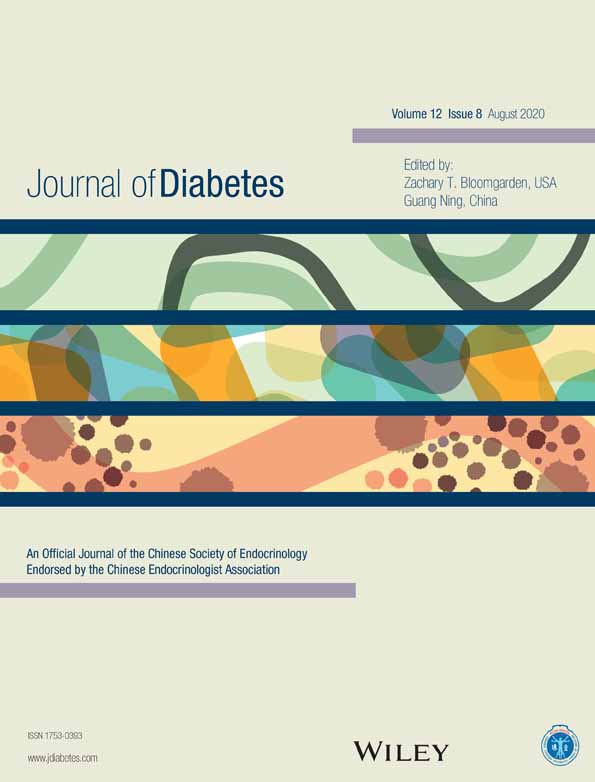Sonographic and other nonglycemic factors can predict large-for-gestational-age infants in diet-managed gestational diabetes mellitus: A retrospective cohort study
超声和其他非血糖因素可以预测饮食管理中的妊娠糖尿病孕妇中的大于胎龄儿:一项回顾性队列研究
Abstract
enBackground
Gestational diabetes mellitus (GDM) is one of the most common complications of pregnancy. Left untreated or poorly controlled, GDM results in adverse infant outcomes such as large for gestational age (LGA). This study aims to identify nonglycemic maternal and fetal factors predictive of LGA outcomes in pregnancies complicated by diet-managed GDM.
Methods
This was a retrospective cohort study of singleton pregnancies complicated by diet-managed GDM from 2004 to 2015. Multiple logistic regression analysis was performed on maternal and perinatal factors to identify risk factors for LGA. In addition, a subset univariate analysis was conducted for pregnancies in which fetal ultrasound abdominal circumference measurements were available at gestational weeks 18 to 22, 24 to 28, and 29 to 33.
Results
A total of 1064 women were included, delivering 123 LGA infants. Women with higher parity (odds ratio [OR] 1.44; CI, 1.23-1.68; P < .001) and higher prepregnancy body mass index (BMI) (OR 1.09; CI, 1.06-1.12; P < .001) were more likely to have LGA infants. Maternal smoking (OR 0.30; CI, 0.14-0.62; P = .001) and higher gestational age at birth (OR 0.91; CI, 0.84-0.99; P = .018) were associated with reduced risk. Subset univariate analysis showed that fetal abdominal circumference measurements at weeks 24 to 28 and 29 to 33 beyond the 75th percentile (OR 5.92 and 13.74, respectively) and 90th percentile (OR 4.57 and 15.89, respectively) were highly predictive of LGA.
Conclusions
Parity, smoking status, maternal BMI, gestational age, and ultrasound fetal abdominal circumference measurements were identified as useful predictors of LGA. Presence of these predictors may prompt closer monitoring of pregnancy and early therapeutic intervention to improve management and reduce the risk of adverse fetal and maternal outcomes.
摘要
zh背景
妊娠糖尿病(GDM)是妊娠期最常见的并发症之一。如果不进行治疗或控制不佳, GDM会导致不良的婴儿结局, 如大于胎龄儿(LGA)。这项研究旨在确定饮食管理的GDM, 其LGA结局的非血糖母婴因素。
方法
这是一项回顾性队列研究,追踪了从2004年到2015年单胎妊娠并进行饮食管理的GDM患者。对产妇和产期因素进行多因素Logistic回归分析, 找出LGA的危险因素。此外, 对妊娠18周到22周、24周到28周和29周到33周有胎儿腹围的超声测量数据进行了亚组单变量分析。
结果
共纳入1064名妇女, 分娩123名LGA婴儿。产次高(比值比(OR)1.44;CI, 1.23-1.68;P<0.001)和孕前体重指数(BMI)高(OR 1.09;CI, 1.06-1.12;P<0.001)的妇女更有可能分娩LGA婴儿。母亲吸烟(OR 0.30;CI, 0.14-0.62;P=0.001)和出生时较高的胎龄(OR 0.91;CI, 0.84-0.99;P=0.018)与风险降低相关。子集单变量分析显示24-28周和29-33周的胎儿腹围超过75百分位数(OR值分别为5.92和13.74)和第90百分位数(OR值分别为4.57和15.89)后, 对LGA有较高的预测价值。
结论
产次、吸烟状况、母亲BMI、胎龄和超声胎儿腹围测量被确认为是LGA的有用预测因子。这些预测因子的存在可能会促使对妊娠进行更密切的监测和早期治疗干预, 以改善管理并降低胎儿和产妇不良结局的风险。
CONFLICT OF INTEREST
The authors declare that they have no competing interests.




